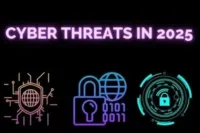Off-Grid Gadgets for Power Outages – Stay Safe, Powered & Prepared
Published: 28 Aug 2025
When the lights go out, everything changes. Phones die, food spoils, and daily routines stop. Power outages can strike during storms, heatwaves, or grid failures-and they never come at the right time. That’s why off-grid gadgets for power outages are more than just cool tools. They are lifesavers.
With the right gear, you can keep your devices charged, cook a warm meal, and stay safe until the power returns. In this guide, we’ll explore the smartest gadgets that give you comfort, security, and peace of mind when the grid goes dark.
Portable Power Solutions
When the grid goes down, power is the first thing you miss. Your phone, lights, and even medical devices need electricity. Portable power gadgets make sure you never stay in the dark for long. Let’s look at the best options.
a. Solar Generators & Power Stations
Solar generators are like large batteries that can run small to medium appliances. They work by storing power from the sun through solar panels. Some also allow wall or car charging.
Ideal use:
- At home: Keep your fridge, Wi-Fi, and lights running during blackouts.
- Camping: Power a fan, cooktop, or laptop outdoors without noise or fuel.
What to look for:
- Watt-hours (Wh): This tells you how long it will last. Higher Wh means more hours of power.
- Output types: Check if it has USB ports, AC outlets, or DC car ports.
- Recharge methods: Best models let you recharge with solar panels, wall sockets, or even car adapters.
Compact Solar Panels & Chargers
These are smaller panels that fold out or come as a solid block. They connect directly to phones, power banks, or small devices.
Designs:
- Brick panels: Small, strong, and good for single-device charging.
- Foldable panels: Lightweight, flexible, and can charge multiple devices at once.
Pros:
- Clean energy from the sun.
- Easy to carry anywhere.
- No fuel needed.
Cons:
- Depend on sunlight—slow on cloudy days.
- Best for small gadgets, not big appliances.
Best-use scenarios:
- Keep your phone alive during a long outage.
- Charge power banks while hiking or traveling.
Hybrid Charging Options
Sometimes the sun isn’t enough. That’s where hybrid chargers step in. These include pedal-powered or hand-crank devices.
- Hand-crank chargers: Small and simple. Just turn the handle to make enough power for a call or flashlight.
- Pedal-powered chargers: Like riding a bike. They can produce more energy for bigger devices.
Why they matter:
- Work anytime—day or night.
- Reliable backup when solar power fails.
- Great for emergency kits and survival bags.
Water & Food
During a power outage, food and clean water quickly become a challenge. Your stove won’t work. Your tap water may stop running. Having off-grid gadgets makes sure you can cook, drink safely, and even stay clean when the grid is down.
Solar & Off-Grid Cooking
Solar ovens use sunlight to cook meals. They work like a greenhouse-trapping heat inside a box or reflective panels until your food is ready. You can bake bread, cook rice, or even roast vegetables with no gas or electricity.
Alternative cooking tools:
- Rocket stoves: Small stoves that use twigs, wood, or even dry leaves for fuel. They burn hot and fast, great for boiling water or cooking simple meals.
- Portable gas stoves: Small propane or butane stoves that work well for emergencies but need stored fuel.
Why they help:
- No fuel bills.
- Work outdoors, safe for camping and survival.
- Reliable when your kitchen stove goes cold.
Water Filtration & Heating
Clean water is the most important need during an outage. Without power, pumps and filters may not work. That’s why portable water filters are a must.
Types of filters:
- Long-term purifiers: Larger systems, good for homes or cabins. They filter large amounts of water for daily use.
- Hand-powered filters: Small, lightweight straws or pump filters. Perfect for hiking or short-term use.
Heating water:
- Solar kettles: Use sunlight to heat water for tea, coffee, or even sterilizing.
- Portable stoves: Can boil water fast, which kills harmful bacteria.
Hygiene solutions:
- Solar shower bags: Black bags that heat water using sunlight. Hang them up and enjoy a warm shower, even with no power.
- Gravity-fed water bags: Simple systems that let you wash hands or dishes without running taps.
Communication & Security
When the power and cell towers go down, staying connected can be tough. You might not reach family, emergency services, or even get weather updates. That’s why off-grid communication gadgets are just as important as food and power. They help you stay safe and informed until things return to normal.
Satellite Messengers
Satellite messengers let you send texts or SOS signals without phone service. They connect directly to satellites, so they work even in remote areas or during disasters.
Popular options:
- Spot X: Cheaper plans, simple messaging, built-in keyboard. Good for budget users who need basic contact.
- Garmin inReach: Costs more but offers two-way messaging, GPS maps, and reliable coverage worldwide.
Plan considerations:
- Some require monthly or yearly subscriptions.
- Check how many messages are included and if SOS services cost extra.
- Choose based on how often you’ll use it—regular adventurers may need unlimited plans, while occasional users can pick pay-as-you-go.
Why it matters:
When networks fail, satellite messengers give you peace of mind. You can tell loved ones you’re safe or call for rescue if needed.
Emergency Radios & Locators
Emergency radios are a must-have for power outages. They can tune into NOAA weather alerts or local news to give you real-time updates.
Types:
- Crank radios: Work by hand-cranking, so no batteries required.
- Solar radios: Recharge with sunlight, making them reliable during long outages.
- Many models also include flashlights, USB chargers, and alarms.
GPS trackers:
- Handy for finding your way if you’re off-grid.
- Some combine tracking with SOS features, sending your location to rescue teams.
Multi-function survival tools:
The Sitpack 20-in-1 (mentioned by the Financial Times) is a great example. It packs multiple tools into one device—like a flashlight, power bank, multitool, and more. Instead of carrying many separate gadgets, one compact kit can cover several needs.
Lighting & Heating
When the power goes out, darkness and cold can feel scary. Having the right lighting and heating gadgets keeps you safe, warm, and comfortable. These tools don’t just add comfort—they also prevent accidents and give peace of mind.
Multi-mode Lighting
Light is one of the first things you lose in a blackout. Flashlights help, but they don’t last long. That’s why multi-mode lighting gadgets are smarter choices.
Popular solutions:
- Lanterns with USB power: Rechargeable lanterns that light up an entire room. Some even double as phone chargers. Great for families and shared spaces.
- Magnetic headlamps: Small lamps that stick to metal surfaces or strap to your head. Perfect for hands-free work, cooking, or moving around in the dark.
- Hybrid lights: Some models run on solar, USB, or batteries—giving you multiple ways to recharge.
Why they matter:
- Safer than candles, which can cause fire.
- Long-lasting, with adjustable brightness.
- Easy to carry, use indoors or outdoors.
Heat & Comfort
Staying warm is just as important as staying bright. In winter, blackouts can make rooms freeze. Luckily, there are off-grid gadgets that bring comfort.
Useful gadgets:
- Wood-stove-powered circulators (eco fans): These fans sit on top of a wood stove and push warm air around the room—no electricity needed. Popular among off-grid users on Reddit.
- Rechargeable warmers: Pocket-sized devices that heat your hands and sometimes charge your phone. Great for short-term warmth during cold nights.
- Thermal blankets & heating pads: Some battery-powered pads work for hours and are safer than open flames.
Why they help:
- Keep you warm without fuel or grid power.
- Prevent health risks like hypothermia in very cold weather.
- Add comfort so power outages feel less stressful.
Tool Kits & Multi-Use Gear
When living off-grid or facing long power cuts, you can’t carry every tool or gadget. That’s why multi-use gear is so valuable. It saves space, lasts longer, and keeps you ready for any surprise. Think of it as your survival partner.
Multi-tools
A multi-tool is like a small toolbox in your pocket. It usually includes a knife, pliers, screwdriver, scissors, and bottle opener—all in one.
Why they help:
- Save space and weight compared to carrying many tools.
- Perfect for quick repairs, cutting ropes, or fixing small gear.
- Strong and long-lasting if made with stainless steel.
Popular picks often mentioned in survival guides are Leatherman and Swiss Army multi-tools.
Rugged Laptops
Sometimes, you need technology that doesn’t break easily. A rugged laptop—like the Panasonic Toughbook, featured in Financial Times and WIRED—is built to survive rough use. These are also best laptops for stdents.
Key features:
- Shock-proof and water-resistant.
- Extra-long battery life for off-grid work.
- Can run mapping software, offline files, or emergency communication apps.
Ideal use: For people who work in remote areas, first responders, or anyone needing reliable tech when the grid fails.
Waterproof & Protective Cases
Water and dust are enemies of your gadgets. A single splash can ruin a phone or power bank. That’s where waterproof cases come in.
Why they matter:
- Protects phones, radios, and chargers from rain or spills.
- Many are crush-proof, so they survive drops.
- Affordable and lightweight compared to replacing broken devices.
Durability & Versatility
The key with tool kits and multi-use gear is long-term strength. During outages, you don’t want fragile gadgets that fail in one use. Durable, versatile tools give you peace of mind and reduce the number of things you need to carry.
A good multi-tool, a tough laptop, and protective cases together form a survival combo—helping you stay prepared in every situation.
Budgeting & Planning Tips
Buying off-grid gadgets can get expensive. But you don’t need to purchase everything at once. With the right plan, you can build a reliable setup step by step. Budgeting smartly helps you stay ready without wasting money.
How to Prioritize Purchases
Not every home needs the same gadgets. Think about how often power cuts happen and how severe they are.
- Short outages (a few hours): Focus on basics like lanterns, power banks, and small solar chargers. These keep your phone alive and lights on.
- Medium outages (a day or two): Add a solar generator or portable stove. These help with cooking and keeping food safe.
- Long outages (several days or weeks): Invest in bigger systems like large solar panels, water purifiers, and heating tools.
Start small, then build up your gear as your needs grow.
Maintenance Tips
Gadgets only help if they work when you need them. A little care keeps them ready.
- Batteries: Recharge power banks and generators every few months, even if unused. Store them in cool, dry places.
- Solar panels: Wipe dust and dirt off panels so they capture sunlight better. Keep them angled toward the sun when in use.
- Stoves & filters: Test portable stoves and water filters before emergencies. Replace filter cartridges as recommended.
- Lights: Check lanterns and headlamps often. Keep spare bulbs or backup units.
Recharge Strategies
During an outage, you may need to recharge devices in creative ways.
- Pair solar panels with power stations for steady backup.
- Keep a mix of chargers—solar, hand-crank, or car adapters—for flexibility.
- Always charge power banks on sunny days, even if you don’t need them yet.
Conclusion
Power outages don’t have to leave you helpless. With the right off-grid gadgets, you can keep the lights on, cook a warm meal, stay connected, and protect your family until the grid returns. From solar generators to water filters, multi-tools, and emergency radios, each device adds comfort and security in uncertain times. The key is to plan smart, start with the basics, and build your kit step by step. When the next blackout comes, you won’t just survive—you’ll be ready.
FAQs
The most useful gadgets are solar generators, lanterns, water filters, and emergency radios. These help with light, power, clean water, and staying informed. Having a mix of these ensures you cover the basics. They are portable and easy to use during long outages.
Yes, solar panels can help, but it depends on the setup. Small panels charge phones and lights, while larger ones with batteries can run fridges or fans. A full home needs a big solar system, which costs more. Still, even a small kit is very useful for daily needs.
Hand-crank chargers are slow, but they are lifesavers in emergencies. They can power radios and phones when no other option works. Since they need no sunlight or batteries, they always work. It’s smart to keep one in your emergency kit.
It depends on the battery size and what you plug in. Small ones may last 2–4 hours, while bigger ones run for days. Charging laptops or fridges drains them faster. For lights and phones, they can last a very long time.
Solar ovens and rocket stoves are safe and reliable. They don’t need gas or electricity, just sunlight or wood. They reduce fire risk indoors and are easy to use outdoors. This makes them great for emergencies or camping.
Always keep batteries charged, clean solar panels regularly, and test your gadgets every few months. Store them in a cool, dry place to prevent damage. Recharge power banks often to avoid losing capacity. Good care extends the life of your gear.
Not fully, unless you build a large solar and battery system. Most gadgets are designed for essentials like lights, phones, and cooking. They reduce your dependence on the grid but won’t power heavy appliances long-term. Still, they give peace of mind during blackouts.
Rugged laptops are built for tough conditions, like rescuers, military, or field workers. They resist water, dust, and drops. Normal users don’t always need them, but they are useful in off-grid or outdoor jobs. For most people, a regular laptop with a case is enough.
You can start small with $50–$200 for basics like lanterns and power banks. Larger items like solar generators and panels cost more, usually hundreds of dollars. The price depends on your outage risks. Planning helps avoid overspending.
Keep them in a dry, cool, and easy-to-reach spot. Many people use waterproof cases or emergency boxes. Store them together so you don’t waste time searching during outages. Accessibility and care are key to staying prepared.

- Be Respectful
- Stay Relevant
- Stay Positive
- True Feedback
- Encourage Discussion
- Avoid Spamming
- No Fake News
- Don't Copy-Paste
- No Personal Attacks

- Be Respectful
- Stay Relevant
- Stay Positive
- True Feedback
- Encourage Discussion
- Avoid Spamming
- No Fake News
- Don't Copy-Paste
- No Personal Attacks





